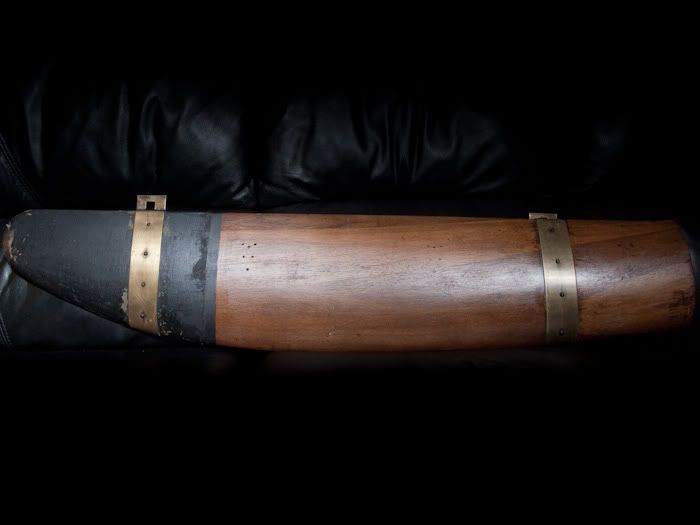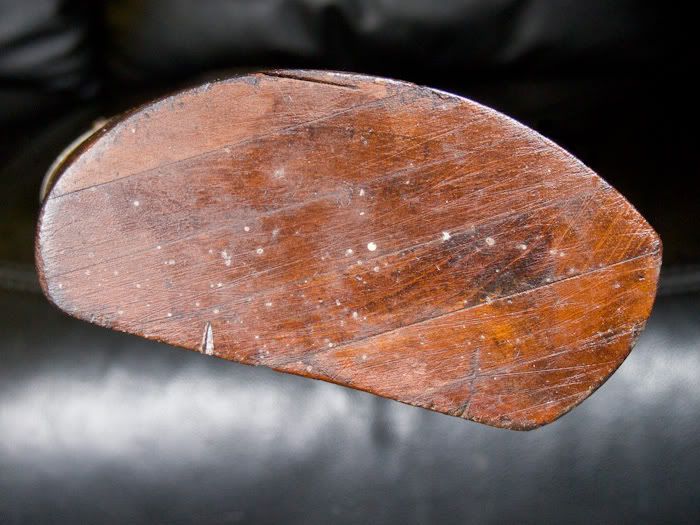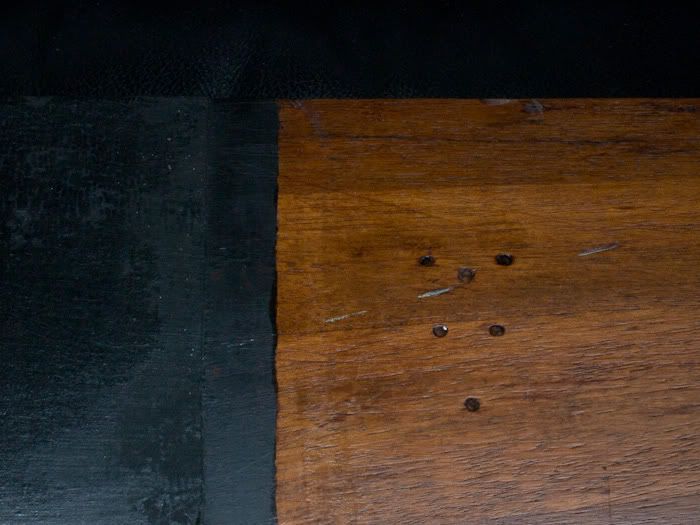Hi
Could anyone hazard a guess what country this prop originated?
Sorry but no markings are evident. Has a black canvas tip and the wood is still a bit glossy because I just gave it a drink of linseed oil yesterday.
It once had four emblems fixed to it that were evenly spaced apart. I'm really after what they could have been so I can return it to its original glory.
The emblem holes are in a unique patten and all exactly the same. I was thinking a hat badge size maybe?
The full prop dimensions are:
Length, 97.5cm
Widest width, 20.5cm
Not sure of the wood type, mahogany?
Best regards, Stephen.



Could anyone hazard a guess what country this prop originated?
Sorry but no markings are evident. Has a black canvas tip and the wood is still a bit glossy because I just gave it a drink of linseed oil yesterday.
It once had four emblems fixed to it that were evenly spaced apart. I'm really after what they could have been so I can return it to its original glory.
The emblem holes are in a unique patten and all exactly the same. I was thinking a hat badge size maybe?
The full prop dimensions are:
Length, 97.5cm
Widest width, 20.5cm
Not sure of the wood type, mahogany?
Best regards, Stephen.



Comment